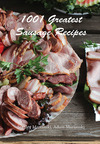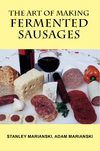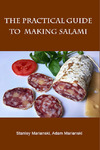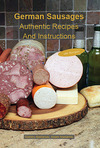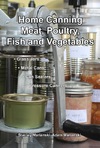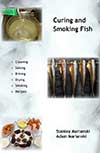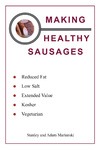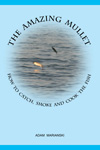Meats and Sausages
Economy Liver Sausage (Kiszka wątrobiana)
A simple to make Polish liver sausage that utilizes any leftover piece of meat. Almost like a commercially made frankfurter or hot dog, the exception being a large proportion of liver.
| Meats | Metric | US |
|---|---|---|
| pork, beef or lamb liver | 300 g | 0.66 lb. |
| brains, tongues, hearts, kidneys, lungs, beef or lamb tripe, stomachs, veal casings, beef, veal | 200 g | 0.44 lb. |
| bones meat, pork trimmings | 200 g | 0.44 lb. |
| fat trimmings | 300 g | 0.66 lb |
Ingredients per 1000g (1 kg) of meat
| salt | 18 g | 3 tsp. |
| pepper | 2.0 g | 1 tsp. |
| marjoram | 2.0 g | 1 tsp. |
| onion, chopped | 60 g | 1 onion |
Instructions
- Soak liver in cold running water for 1 hour, remove sinews, cut into slices and cover with water of 90°C (194°F). Poach for 8-10 min, stirring frequently. Then cool liver in cold water for about 5 min and leave to drain water away.
- Poach meats (except liver and brains) in a small amount of water: kidneys and lungs at 80-85°C (176-185°F), other meats (except fat) at 95°C (203°F) until soft, fat trimmings at 85°C (185°F) until medium-soft. Save meat stock.
- Grind liver and brains through 2 mm plate and emulsify. Grind other meats through 2 mm plate and then emulsify.
- Emulsify the liver until it feels spreadable. Then add salt, spices, all other meats, and lastly, fat pieces and keep on emulsifying everything together. During emulsifying, add about 10% of the stock (in relation to the weight of poached meats) that remained after poaching.
- Stuff the mixture loosely into pork bungs, beef middles, or synthetic casings.
- Immerse sausages in boiling water and poach at 176-185°F (80-85°C) for 50-90 min until internal meat temperature reaches 154-158°F (68-70°C).
- Cool sausages in cold running water for about 10 min, then hang them up and cool down to below 6°C (43°F).
- Store in refrigerator.




